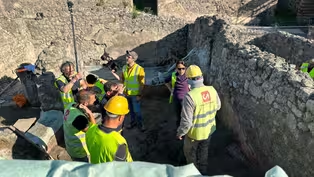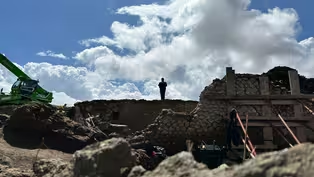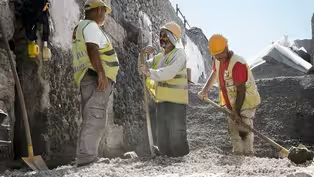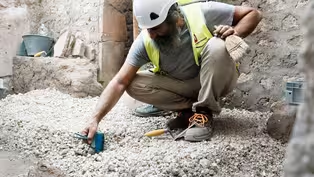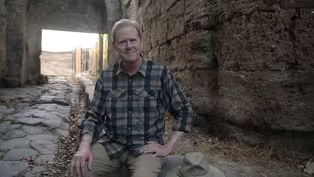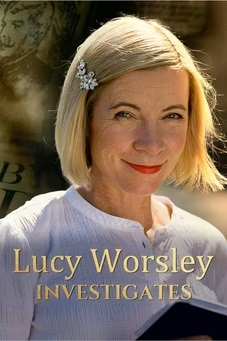
Stay or Flee
Clip: Episode 2 | 2m 20sVideo has Closed Captions
Professor Chris Jackson explains how Pompeiians might have survived the eruption of AD 79.
Professor Steven Tuck of Miami University begins a pioneering new research project looking for potential eruption survivors. He starts by visiting a newly discovered tomb that holds vital clues as to how many people lived in Pompeii in AD 79.
Problems playing video? | Closed Captioning Feedback
Problems playing video? | Closed Captioning Feedback

Stay or Flee
Clip: Episode 2 | 2m 20sVideo has Closed Captions
Professor Steven Tuck of Miami University begins a pioneering new research project looking for potential eruption survivors. He starts by visiting a newly discovered tomb that holds vital clues as to how many people lived in Pompeii in AD 79.
Problems playing video? | Closed Captioning Feedback
How to Watch Pompeii: The New Dig
Pompeii: The New Dig is available to stream on pbs.org and the free PBS App, available on iPhone, Apple TV, Android TV, Android smartphones, Amazon Fire TV, Amazon Fire Tablet, Roku, Samsung Smart TV, and Vizio.
Buy Now
Providing Support for PBS.org
Learn Moreabout PBS online sponsorship♪ PROF. CHRIS JACKSON: It's hard to make decisions during volcanic eruptions, whether to stay and guard your property and stay with your loved ones... or whether to flee.
NARRATOR: Volcanologist Professor Chris Jackson believes the Pompeiians would have had to act quickly to stand any chance of survival.
PROF. CHRIS JACKSON: Within the first hour to hour and a half of the eruption, the column grew from around 14 kilometers high to about 22 to 23 kilometers high.
That's about twice the altitude at which a commercial aircraft flies.
VOLCANO EXPLODES PROF. CHRIS JACKSON: The rising column, driving everything up skyward, would have caused a zone of low pressure, meaning that the air from the surrounding region was sucked in.
The weather was changed by this volcanic eruption.
The wind would have picked up as the wind swept along these narrow streets towards Vesuvius.
For people fleeing the city, racing down these streets, behind them would have been chaos, ash falling out of the sky.
We'd have seen lightning as electrically-charged particles started to interact.
It would have been almost like the end of the world.
But at this moment, people in Pompeii would still have had a chance to escape.
They'd have been disorientated, they'd have been scared, but they would still have had a chance to exit the city through one of the gates.
But any window that was open for the residents to leave... was rapidly slamming shut.
Video has Closed Captions
Clip: Ep2 | 2m 2s | Archaeologists begin to restore a fresco depicting the Greek myth of Achilles. (2m 2s)
Video has Closed Captions
Clip: Ep2 | 1m 37s | Archaeologists in Pompeii begin to reconstruct an elaborate, intricately painted fresco. (1m 37s)
Video has Closed Captions
Preview: Ep2 | 30s | An excavation in Pompeii unearths new rich finds, and the search is on for survivors. (30s)
Video has Closed Captions
Clip: Ep2 | 1m 19s | The archaeologists discover expensive marble furniture in the atrium of the wealthy house. (1m 19s)
Professor Tuck Begins His Search
Video has Closed Captions
Clip: Ep2 | 3m 2s | Professor Steven Tuck begins pioneering research looking for potential eruption survivors. (3m 2s)
Providing Support for PBS.org
Learn Moreabout PBS online sponsorshipSupport for PBS provided by:
